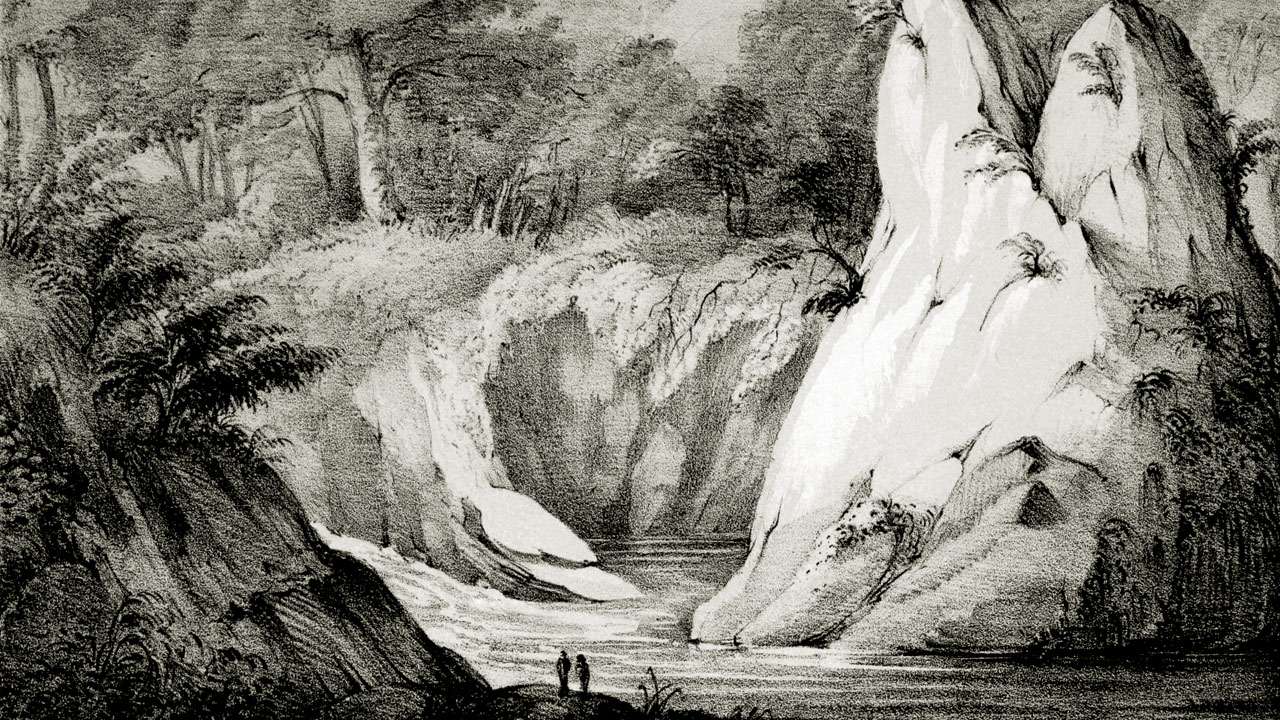
In the 1790s, William Carey laid out a five-acre garden and herbarium at Serampore, North of Calcutta. He experimented with plants like the hedgerows that somewhat placated his nostalgia for his native Northamptonshire. According to Arnold, the Company servants derived pleasure from detailed renditions of plants and flowers. Additionally, they began investing in botanical drawings for the purposes of documentation and disseminating plant data. Besides the precision of scientific drawings, there was a sure footed aesthetic to the art form. It was an era of amateur research- the bedrock of Empire.
Indian artists like Vishnu Prasad and Lakshman Singh who had hitherto enjoyed the patronage of the Mughal court, turned to new patrons, the Company. The officials were in need of exact likeness of the exotic Indian plants (in the pre-photography days) as a ready reference for quick identification of flora. This was owing to the lucrative trade in various plants and plant-based products that happened to rise in tandem with botany as a science. Throughout The River of Smoke, one such botanical drawing reverberates in the novel and like the holy grail, spurs a search across continents. When they are merely a week away from the Chinese port, Paulette learns that the vessel is carrying, apart from the consignment of pots, also what is referred to as a ‘painted garden’- a collection of botanical paintings and drawings.
For the botanist James Cunningham it is not easy to carry specimens back to London and he discovers the skill of the Chinese artists in depicting detail of local flora. He returns from China with over a thousand botanical paintings. It elicits a curious response from the English scientists who are awe struck with flowers and plants of such exquisite beauty that they refuse to believe that these actually exist- ‘there were some who said that these painted flowers were the botanical equivalents of phoenixes, unicorns and other mythical creatures.’ Cunningham develops a passion for the Camellia, from the family of the Chinese tea bush- Camellia Sinensis, the source of Chinese tea trade and wealth. According to legend, Camellia was ‘… of a rich golden colour and yielded an infusion that could turn white hair to black, restore the suppleness of aged joints and serve as a cure for ailments of the lungs.’ Cunningham appropriately nicknames it the “Golden Camellia” and launches a quest, believing that if it could be found and propagated, it might surpass the tea bush in value. Cunningham, however dies in an accident, and all that survives is a painted reproduction. The painting bore the following inscription: “The petals on their green tinged stem shine like pure gold./ A purple eye looks up from the centre, setting the bloom aglow,/ It remedies the pain of ageing bones and quickens the memory and the mind,/ It puts to flight the death that festers in the lungs.”
The painting then comes into the possession of Joseph Banks who, too, is convinced of its worth and sends a trained horticulturist, William Kerr to Canton at public expense. He, too, is unsuccessful with the mission on his first expedition and in this regard Fitcher arranges for the services of the artist George Chinnery to be roped in. Chinnery is an English artist who has spent many years in Canton and Fitcher believes that he would be able to identify the artist of the painting, who, in turn would lead them in identifying the plant. The quest for the prized plant gives an opportunity to Chinnery to unravel the stories of several personages connected with botanical work in China, and the European efforts in siphoning off the plant wealth of China to Europe.
In the eighteenth century, the gardens at Kew, London, were at a formative stage while Chinese horticulture had developed to an advanced level. The Chinese were at the forefront of tea trade and depleting the English of their bullion reserves. The English were in a dire need to discover a commercial equivalent to tea. In the meantime they planted the very first tea gardens in Darjeeling after due process of acclimatising Chinese varieties to Indian climate.
However, coming back to the bewildering quest launched by the painting, it is revealed at the end that the plant as represented in the painting did not exist after all. It was, but, a figment of a flamboyant painter’s imagination.
And for once, the feisty British enterprise is made to look gullible.
The opium wars story is for another day.
The writer teaches English Literature at a college in Chandigarh. Views are personal.